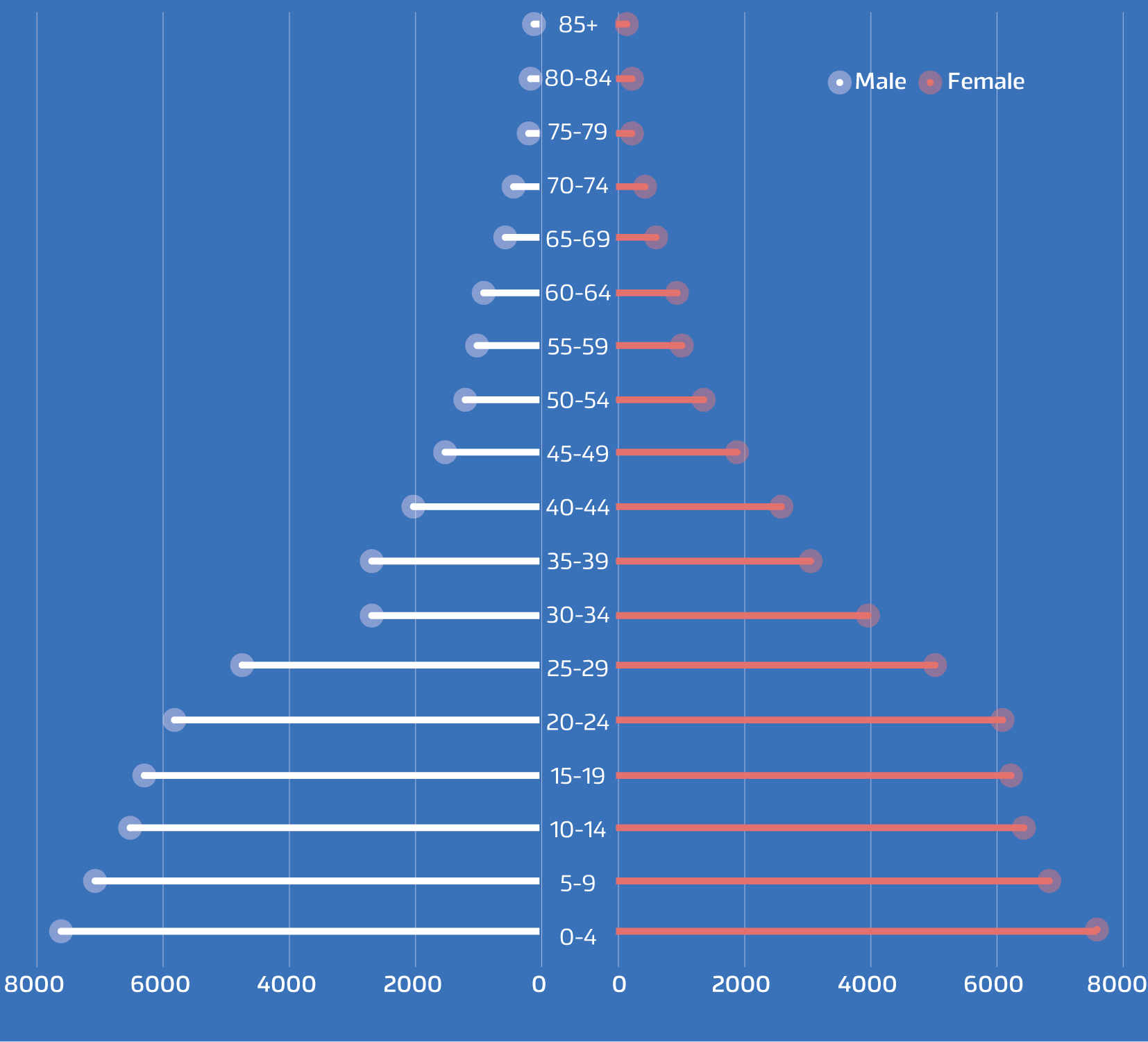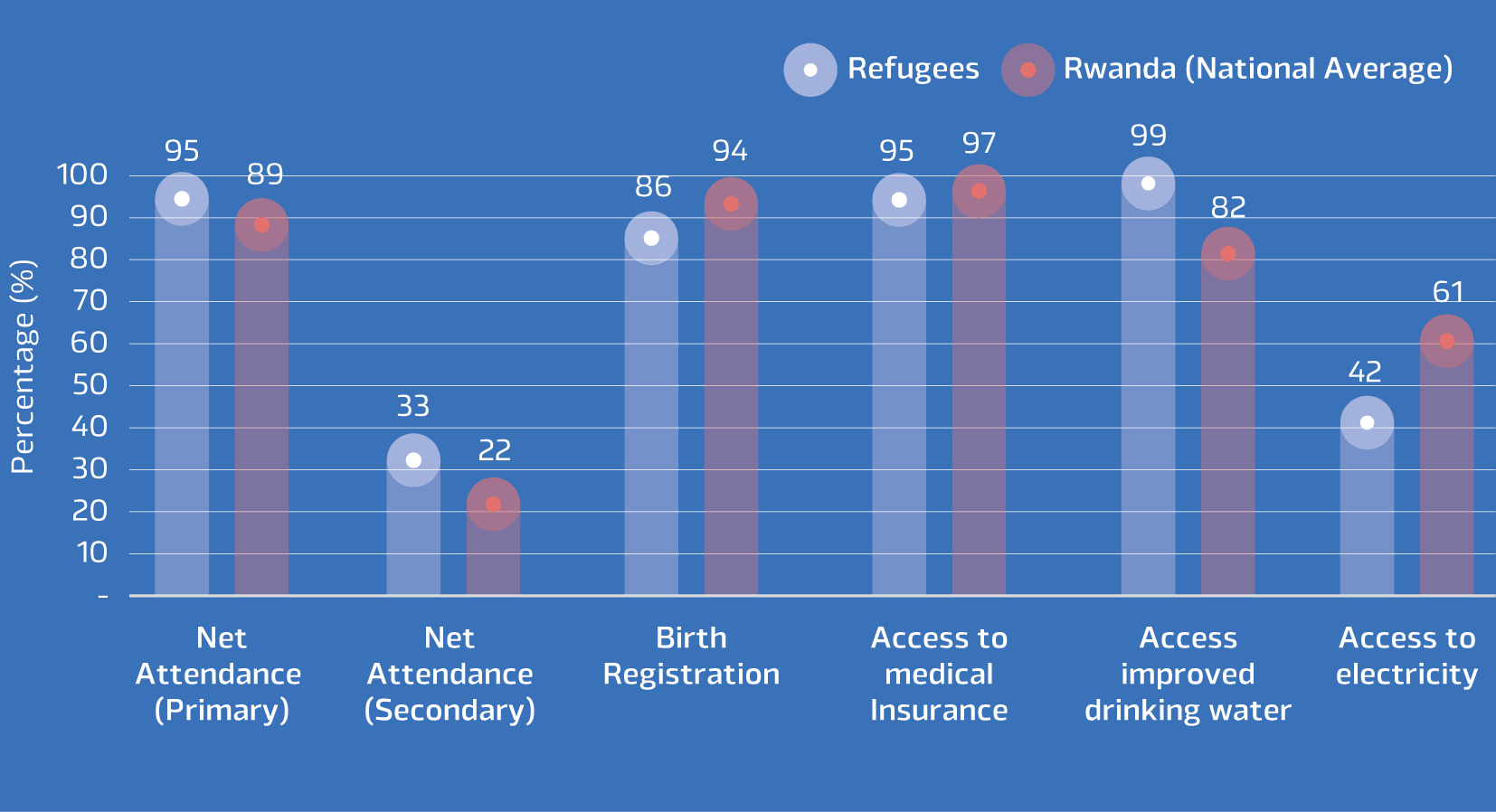Rwanda
Including refugees and statelessness
in the population census
Background
Rwanda hosts significant numbers of refugees, with many of them residing in the country for decades. The country also has populations effected by or at risk of statelessness for a variety of reasons including those associated with their migratory history, cross-border communities and nationality laws and associated administrative procedures.
Demonstrated by adherence to the 1954 and 1961 Statelessness Conventions, the 1951 Refugee Convention, the 1967 Additional protocol and the 1969 Organisation of African Unity Convention, Rwanda’s commitment to eliminate statelessness and enable the inclusion of refugees is clear. Moreover, as expressed through public pledges made in the context of both regional and international conferences, the Government has concretised these commitments into national policies that create a favorable environment for the protection and socio-economic integration of refugees and asylum seekers, as well as safeguarding children from statelessness. [1]
Improved national statistics on refugees and statelessness have therefore become a priority for the Government and the National Institute of Statistics of Rwanda (NISR). Work to modernise and strengthen its civil registration system falls within this scope, as do efforts to include relevant populations in the 5th Rwanda Population and Housing Census (RPHC-5).
The 5th Population and Housing Census
The RPHC-5, conducted in August 2022, is a pivotal project aligned with the third National Strategy for the Development of Statistics (NSDS3) in Rwanda. The census form incorporated questions related to the country of origin/birth, duration of stay in the country, nationality, and ID documents, enabling the inclusion of refugees and stateless individuals.
The dissemination of census results was conducted at national and sub-national levels (Provinces and districts) to facilitate their use for decision-making, supported by 30 district profiles. [2] 18 thematic reports and a census population atlas have also been produced. [3] Initial results, published in December 2023, enable the comparison of refugees to the national population and cover both demographic and socio-economic statistics. They show that refugees constitute 1% of the population, with 71% of them aged below 30, and present important findings concerning access to medical insurance, improved drinking water and primary and secondary school.
The thematic report on “Socio-economic status of refugees” indicates that refugees’ population are distributed in all districts of the country, and the majority of them live in rural areas (81.7 %). The sex ratio among refugees is found to be relatively similar to that of the total resident population whereby female represent 51.5 % and male representing 48.5 % of this population.
Findings on the stateless population however are more limited. Given the intricacies of fully identifying stateless populations in Rwanda, census results show “hot spot” areas where possible stateless populations reside. An additional mini census will be conducted in these areas to deepen the understanding of statelessness and inform policy implementation.
Alongside the Government of Rwanda’s commitment to address statelessness, several factors contributed to a successful census including the active engagement of stakeholders such as the Directorate General of Immigration and Emigration (DGI&E), the Ministry of Emergency and Management (MINEMA), the National ID Agency, the Human Rights Commission and local government authorities, as well as various regional and international partners. Comprehensive awareness campaigns, quality training and the use of technologies to facilitate data collection were also key. The participation of stateless persons and refugees at different stages was crucial.
Refugees Population Age Structure

Source: 2022 Population and Housing Census, NISR
The use of the International Recommendations
The NISR leveraged the International Recommendations on Refugee Statistics (IRRS) and the draft International Recommendations on Statelessness Statistics (IROSS) to include relevant identification questions in the census. In addition, these frameworks have served as guidance to provide a demographic disaggregation of the census indicators by refugee status, enabling better harmonization of data.
Rwanda’s active involvement in the development of the IROSS as a member of the EGRISS, contributed to the commitment of the inclusion of statelessness in the census. Moreover, Rwanda’s experience contributes to validate the Recommendations’ content concerning the potential of censuses to identify likelihood of statelessness as opposed to specifically identifying this population.
“Complete, reliable, timely and internationally comparable statistics concerning forcibly displaced persons are essential to facilitating their inclusion in national systems and improving their living conditions. Everyone counts. Let’s get them counted”.
– Venant Habarugira, Director of Censuses Department, National Institute of Statistics Rwanda (NISR)
Indicators for Refugees and Rwanda’s population

Source: 2022 Rwanda Population and Housing Census, NISR
Conclusion
The inclusion of refugees and statelessness in the RPHC-5 was successful due to the commitment of the Government, leadership, and capacity of NISR and collaboration with key stakeholders. The case presents a concrete example of implementation of the International Statistical Recommendations. Results will inform national and sub-national policies related to the socio-economic inclusion and wellbeing of refugees and will inform further analytical work on statelessness.
[1] See: Ministerial Instructions of Determining and Management of Refugees and refugee, 2016, article (12/e).
[2] See: Statistical reports – District Statistics (NISR).
[3] See: Statistical reports – Population size and Population characteristics (NISR).
